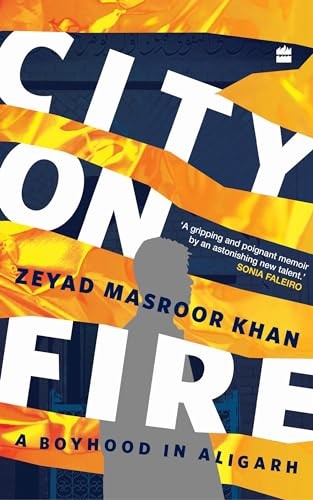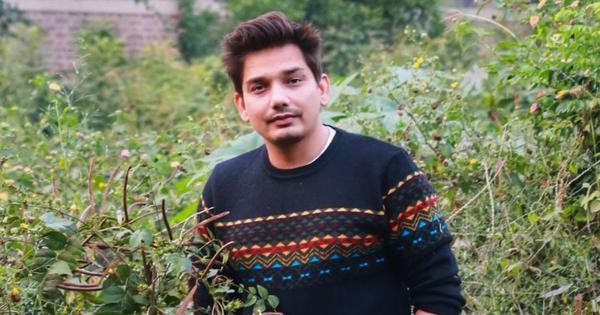– Shayma S
At the end of the memoir, after tracing riots in Aligarh, the excitement of growing up in the city, studying at the university and witnessing violence in myriad forms, the author comes to Delhi. Only in Delhi does he grow to appreciate and even love Aligarh fully – after seeing and being at the heart of the Delhi pogrom in 2020 and the COVID pandemic that hit soon after. The idea of home is contentious, never romanticised, but always very real, even if it is tinged with a sense of impending doom and tension due to the communal polarisation permanently in the air.
 Divided into three sections and 20 chapters (“Childhood”, “Boyhood”, and “Manhood”), Zeyad Masroor Khan’s debut novel, City on Fire: A Boyhood in Aligarh (Harper Collins), begins with a dedication to the memory of his late father – a significant character in the book – and to “all those who have ever lost loved one to religious violence.”
Divided into three sections and 20 chapters (“Childhood”, “Boyhood”, and “Manhood”), Zeyad Masroor Khan’s debut novel, City on Fire: A Boyhood in Aligarh (Harper Collins), begins with a dedication to the memory of his late father – a significant character in the book – and to “all those who have ever lost loved one to religious violence.”
In the present times, where polarisation is at its height, Khan’s book is necessary, urgent, and most importantly adds to a growing corpus of novels and memoirs that transcend genre (Is it a memoir? Is it a story that can be the story of any young boy in Aligarh or similar towns of North India?) and embody the Indian Muslim experience in all its diversity. The book’s heart is set in “UK” – Upar Kot, mid-scene as violence breaks out and bullets fly, walls are demolished, bricks narrowly miss people, and stones hit houses.
The book can be said to be a love letter to Aligarh – alternately, a city of a million people resting between the Yamuna and the Ganga, a town of lock-makers, a city surrounding its famous university, and a city where “the idea of Pakistan was said to be born”, as the author writes in the initial pages. In Upar Kot are poor homes, wealthy homes and “Manzils.”
Writing this review from Jamia Nagar, having never lived in Aligarh, there are striking similarities in how “Muslim areas” – or more derisively, as newspapers call them, “Muslim-dominated areas” look alike and sound alike. Ghettoes have poor and poorer areas, or “rich areas”, and areas with access to a little more light and air than the rest.
After setting the scene for the story, Khan comes to the core of the work – communal polarisation. Some features are unique to places that frequently see violence – unspoken tension, how people sense that something is going awry, and even technological inventions like “The Button” – “A small, white, electrical switch hung in my drawing room near a window overlooking Kanwari Ganj, the Hindu area…The Button wasn’t attached to a switchboard and just hung above the windowpane. Its intertwined black and red wires led to our balcony and then got lost in a crowd of electrical cables near a blue metal grill.”
Curious, the children pull the Button to find out chaos and commotion are breaking out in the mohalla because it is an alarm in the form of a lightbulb that lights up to inform people that communal violence has broken out.
There are similar striking incidents and lines from the novel that should not be spoilt for the reader. From incidents that display the shared humanity between both Hindu and Muslim neighbours of Upar Kot, including a pivotal scene where the author’s schoolbus is surrounded by rioters, to heartbreaking revelations of neighbours and known people betraying residents by giving into religious polarisation, the book has it all. Although there are several incidents of violence that mar life in Upar Kot, the book’s tone is not hopeless or one of permanent despair.
While several novels in recent times (Quarterlife: A Novel by Devika Rege or History’s Angel by Anjum Hasan) have showcased Muslim characters in their narratives, the truth of Khan’s words stand out – here you will find not just caricatures or stereotypes of Muslims or any binary of good/bad Muslims, but Muslim life in an average Muslim neighbourhood in all its highs and lows.




